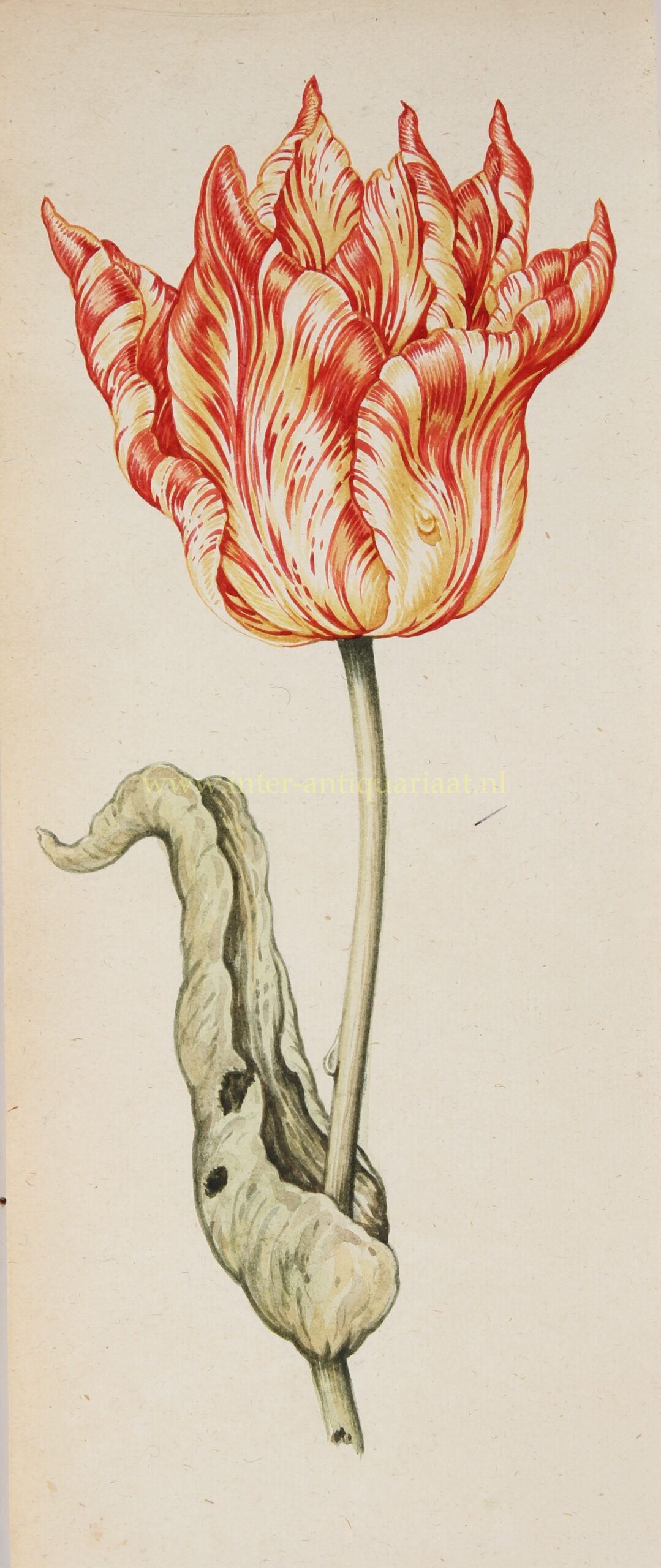PORTRAIT OF A ‘BROKEN’ ORANGE/YELLOW TULIP
Watercolour by ‘The Tulip Painter‘. Made in the early 18th century. Size: (paper): approx. 27 x 11.5 cm.
Here we see a so-called ‘broken tulip’ with a unique pattern on its petals, resembling flames, stripes, or variegated colors. Broken tulips were prized above all other tulips during the Dutch Golden Age. In the 17th century, the prices offered for tulip bulbs reached extreme heights. In January/February 1637, tulip bulbs were sold for thousands of guilders, more than ten times the annual salary of an experienced craftsman. Speculation was rampant, with options traded on tulips that were still in the ground.
Since the blooming period of tulips in spring only lasted a few weeks, tulip bulb traders began commissioning drawings of their tulips from the late 16th century onwards. These drawings allowed them to showcase the beauty of the blooming bulbs.
Today, we know that broken tulips were actually diseased. The distinctive flamed color pattern was caused by the Tulip Breaking Virus (discovered in 1928).
The paper of this tulip watercolour is dated around 1700. There were only a few tulip painters in the early 18th century. There is still uncertainty about the identity of ‘The Tulip Painter,’ but there is a strong possibility that these tulips were painted by Maria Sybilla Merian (1647 – 1717). Maria Sybilla Merian was an entomologist, naturalist and scientific illustrator, known for her detailed illustrations of plants and insects. In 1700-1701, she undertook a research trip to Suriname, from which she returned to Amsterdam ill. She needed to support herself, and she might have done so by painting tulips like these. They were intended for an art book, a sort of catalog that compiled a variety of existing tulip varieties.
While painting, she was likely assisted by students (as was common), possibly her daughters. The flower petals were painted by the master, while the leaves on the stem were done by a slightly less skilled hand.
Previously, these watercolors were attributed by Dr. Sam Segal to Anthony Claesz I (1592 – ca. 1635).
Literature:
- Frans Willemse, “Het Mysterie van de Tulpenschilder” (2004)
- Sam Segal, “Tulips by Anthony Claesz” (1987)
Price: Euro 2.950,-


